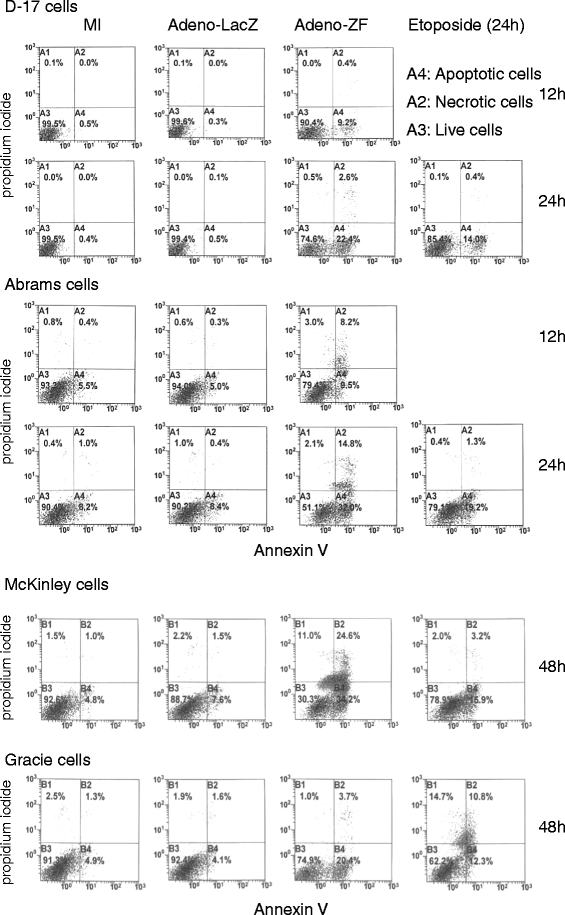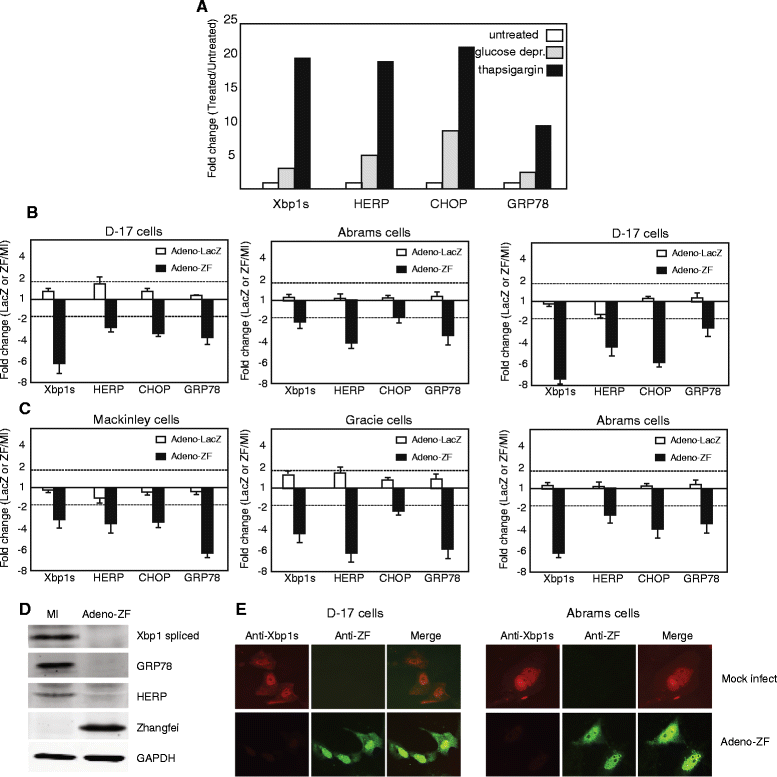The effect of Zhangfei/CREBZF on cell growth, differentiation, apoptosis, migration, and the unfolded protein response in several canine osteosarcoma cell lines
- PMID: 25890299
- PMCID: PMC4326286
- DOI: 10.1186/s12917-015-0331-y
The effect of Zhangfei/CREBZF on cell growth, differentiation, apoptosis, migration, and the unfolded protein response in several canine osteosarcoma cell lines
Abstract
Background: We had previously shown that the bLZip domain-containing transcription factor, Zhangfei/CREBZF inhibits the growth and the unfolded protein response (UPR) in cells of the D-17 canine osteosarcoma (OS) line and that the effects of Zhangfei are mediated by it stabilizing the tumour suppressor protein p53. To determine if our observations with D-17 cells applied more universally to canine OS, we examined three other independently isolated canine OS cell lines--Abrams, McKinley and Gracie.
Results: Like D-17, the three cell lines expressed p53 proteins that were capable of activating promoters with p53 response elements on their own, and synergistically with Zhangfei. Furthermore, as with D-17 cells, Zhangfei suppressed the growth and UPR-related transcripts in the OS cell lines. Zhangfei also induced the activation of osteocalcin expression, a marker of osteoblast differentiation and triggered programmed cell death.
Conclusions: Osteosarcomas are common malignancies in large breeds of dogs. Although there has been dramatic progress in their treatment, these therapies often fail, leading to recurrence of the tumour and metastatic spread. Our results indicate that induction of the expression of Zhangfei in OS, where p53 is functional, may be an effective modality for the treatment of OS.
Figures






References
-
- Mueller F, Fuchs B, Kaser-Hotz B. Comparative biology of human and canine osteosarcoma. Anticancer Res. 2007;27(1A):155–164. - PubMed
Publication types
MeSH terms
Substances
LinkOut - more resources
Full Text Sources
Other Literature Sources
Medical
Molecular Biology Databases
Research Materials
Miscellaneous

